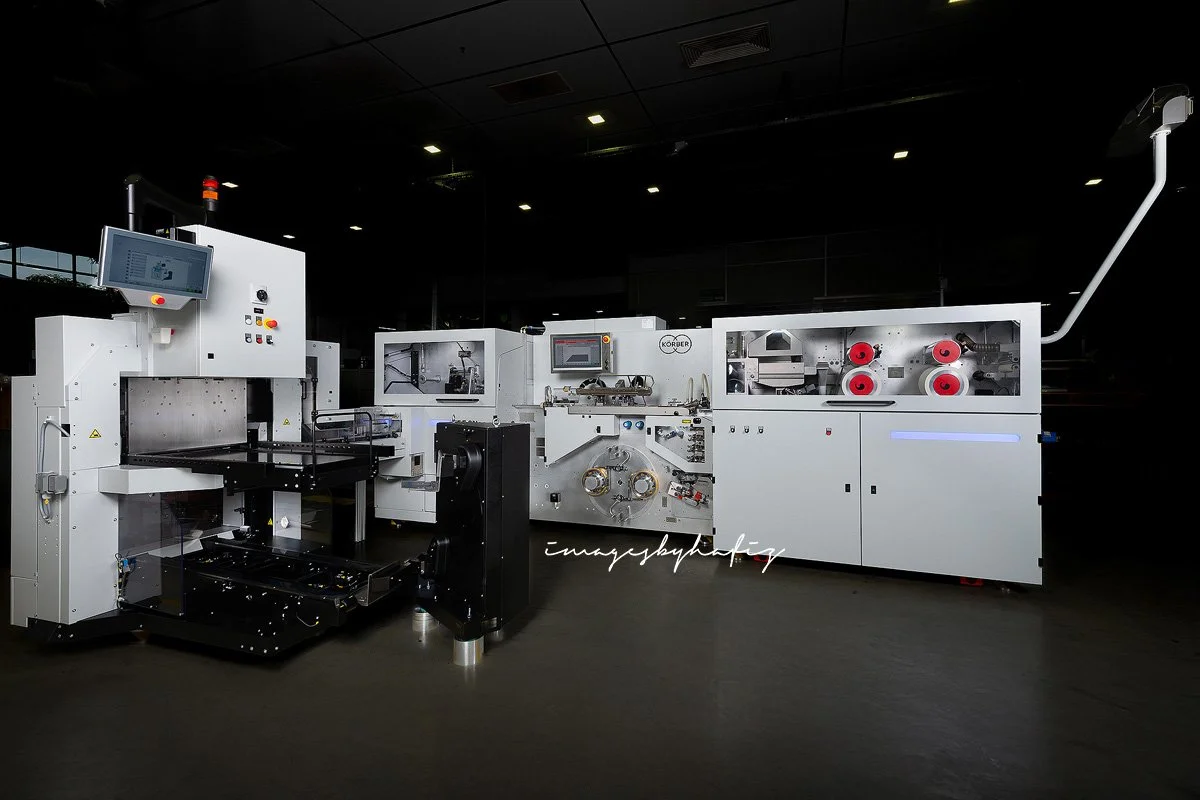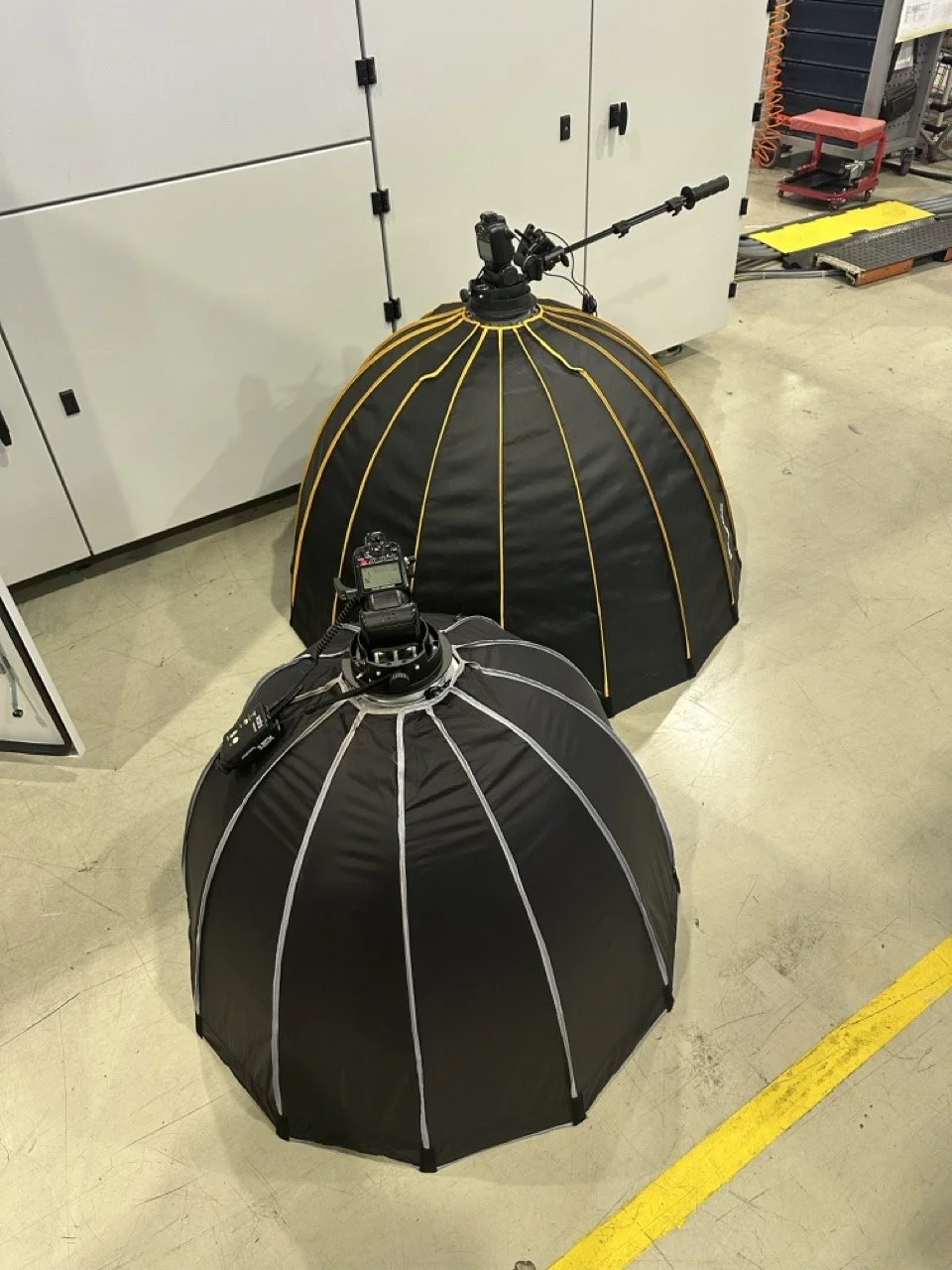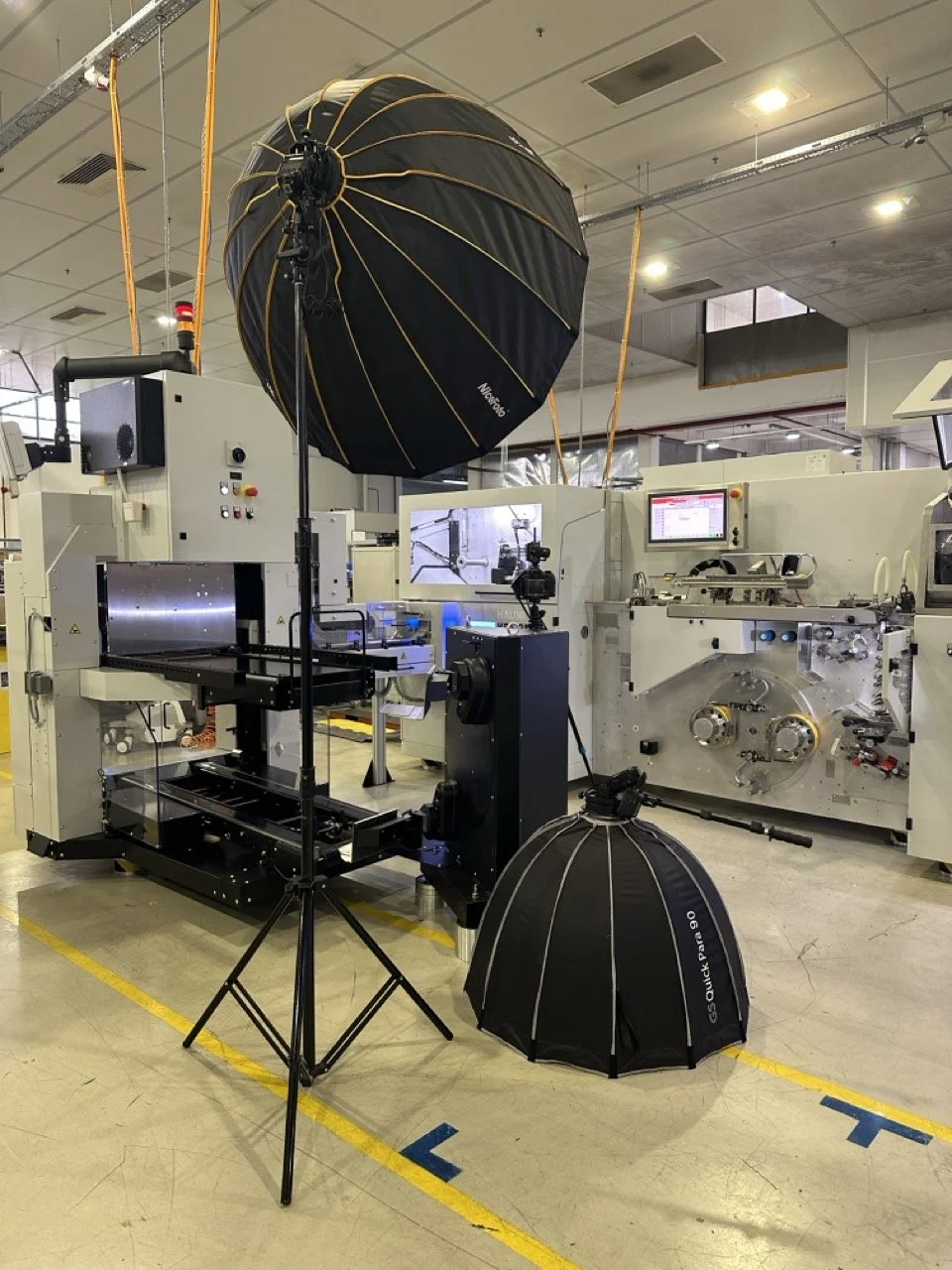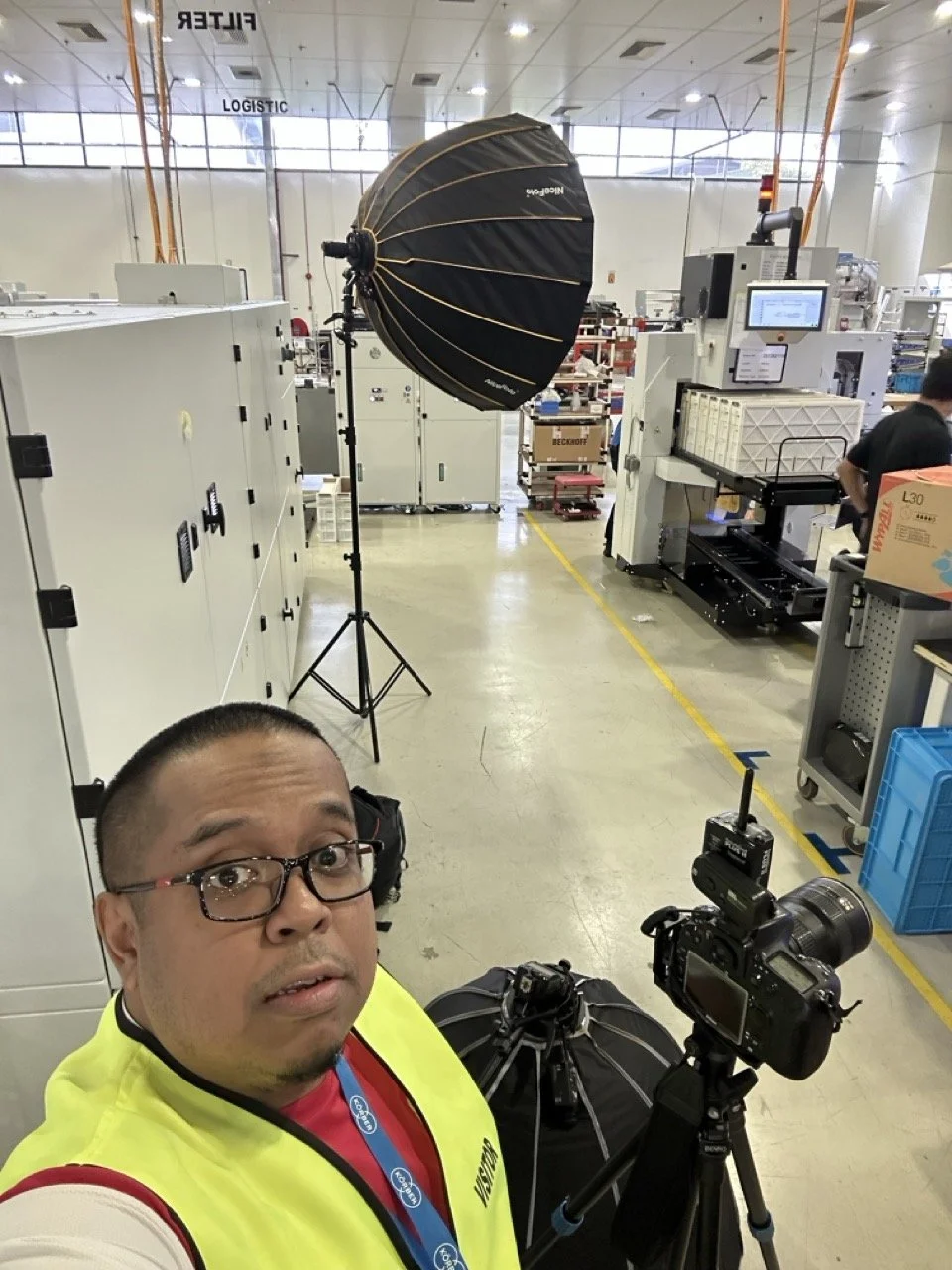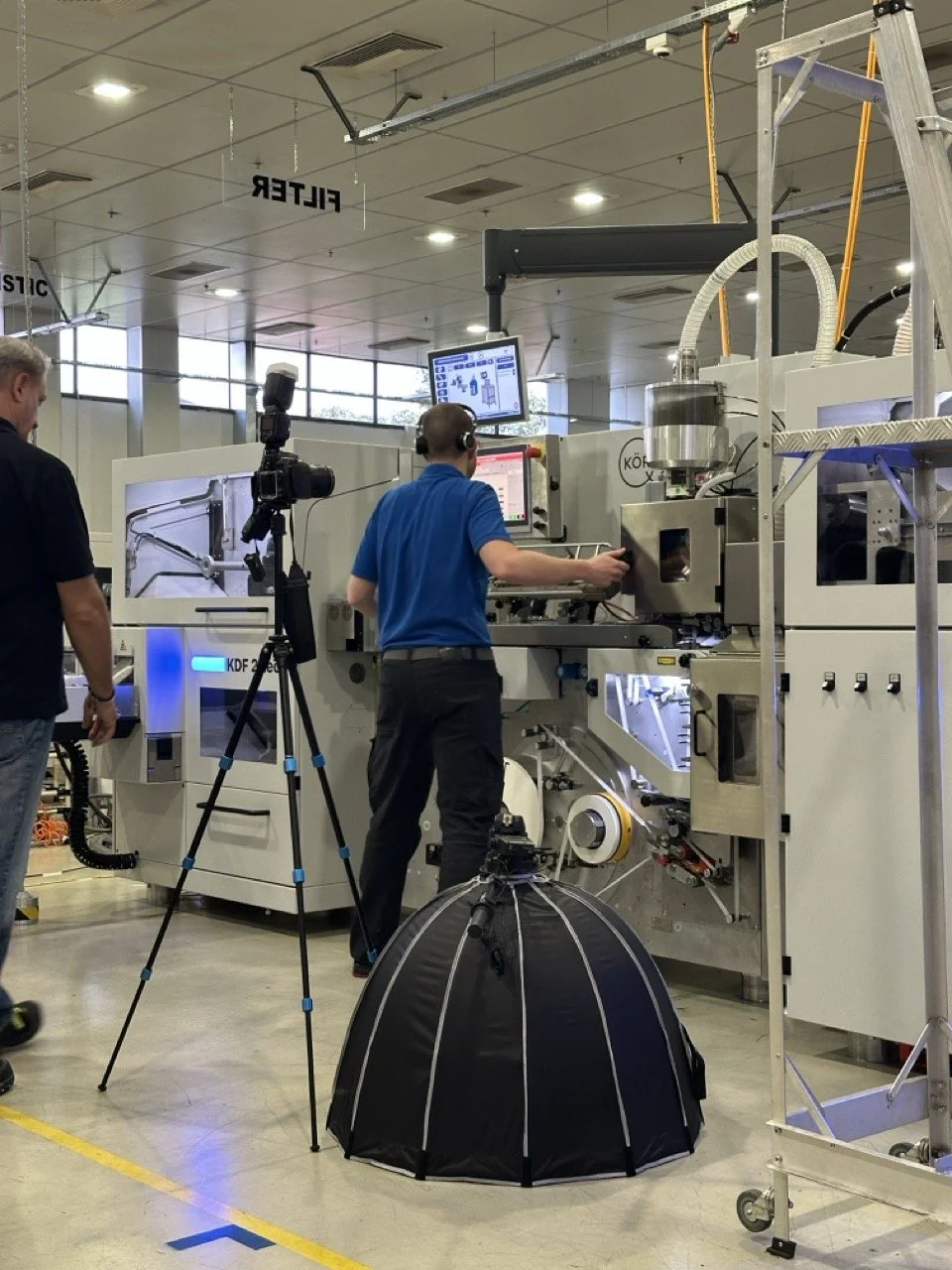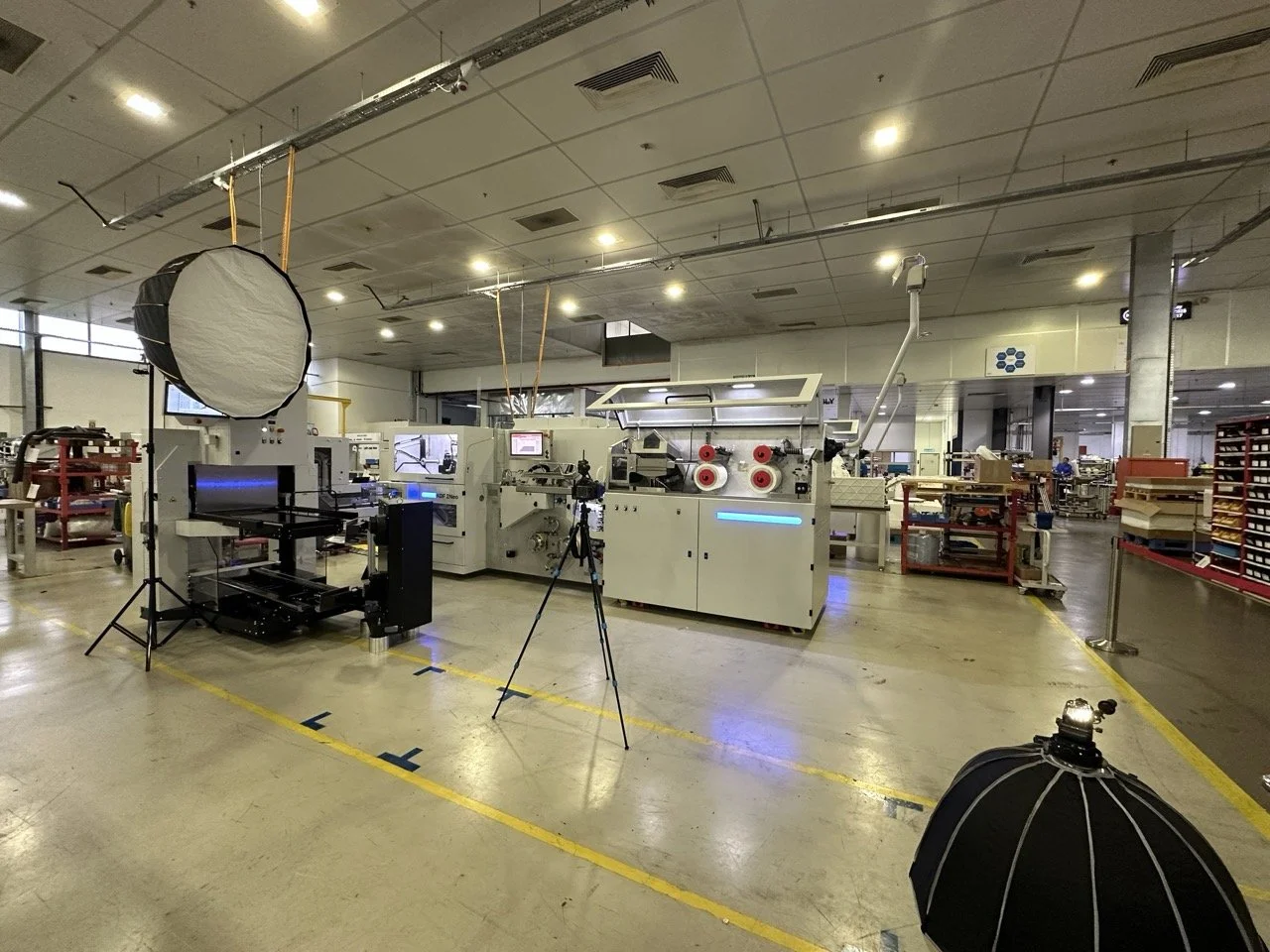Factory & Machine Photography: Lighting Matters
TL;DR:
I recently completed a machine photography assignment for Koerber Technologies Sdn Bhd, capturing their advanced production equipment inside an active industrial setting. The challenge was tough - uneven lighting, tight space, and reflective surfaces. I used my Nikon D800 with 17–35mm f4 and 24–120mm f4, supported by large softboxes to balance the harsh factory lights. With precise lighting control and careful editing, the final images presented the machines with clarity, depth, and visual impact.
Because of client confidentiality, I can’t share many visuals, but what I can share is how the shoot came together behind the scenes.
Machine Photography for Koerber Technologies Sdn Bhd
Machine Photography
Photographing industrial machinery isn’t just about documenting equipment - it’s about showing precision, scale, and purpose. Each surface, curve, and detail carries a story of engineering and design.
The recent shoot with Koerber Technologies brought me into an environment where accuracy matters, both for the machines and for the photography itself. The assignment focused on showcasing their equipment in its natural working environment without disrupting production.
The Challenge
Industrial spaces come with one recurring issue - lighting.
The overhead fluorescents created uneven tones and strong reflections across metal surfaces. Some areas were too dark, others blown out. Getting a clean, consistent image required full control over how light interacted with the machinery.
The Approach
Here’s how I handled the environment and lighting:
Factory Photography - Soft Boxes with portable lighting to solve the lighting challenge
Controlled Lighting Setup:
I brought two large softboxes and supporting strobes to fill the shadows and balance the harsh factory lights. The goal wasn’t to overpower the environment, but to restore balance and detail.
The soft light reduced glare, revealing texture and fine lines on the machine surfaces.Camera Setup:
I worked with my Nikon D800 using both 17–35mm f4 for wide compositions and 24–120mm f4 for tighter frames. These two lenses covered most of the creative and technical requirements for the shoot.On-Site Coordination:
Since the factory remained operational, timing was everything. I worked in short intervals between production cycles to capture clean shots safely.Editing & Color Work:
Each image went through detailed color correction and tonal adjustment. The objective was to maintain accuracy while giving the machines a polished, premium visual tone that would look great on presentations and websites.
Lessons from the Assignment
Factory environments demand technical precision and planning.
Reflective machinery needs diffused light to look its best.
A balance between natural factory ambience and controlled lighting gives the most realistic results.
Post-production is where the image truly comes together - clean, balanced, and professional.
Factory Photography - Two Soft Boxes with portable lighting to solve the lighting challenge
Machine photography may look straightforward, but every image involves careful consideration of light, angle, and reflection. The goal is to show power, structure, and craftsmanship – qualities that define industrial excellence.
Assignments like this remind me why I enjoy commercial photography: it challenges the technical side of creativity.
If your business needs photography that captures the detail and design of your equipment, I can help you present it at its best.
Contact me to discuss your next shoot.
FAQs
Q: What is machine photography?
Machine photography focuses on capturing industrial equipment and production machinery with professional lighting and composition. It’s ideal for marketing, documentation, and investor presentations.
Q: How do you prepare for a machine photoshoot?
Ensure the equipment is clean, well-lit, and accessible. Removing clutter and aligning the surrounding space helps create a more polished look.
Q: What camera gear works best for machine photography?
A full-frame camera with wide-to-mid zoom lenses and diffused lighting tools like softboxes or strobes is ideal.
Q: Can machine photoshoots be done during normal operations?
Yes, with good coordination. I typically schedule brief pauses or work in safe zones to minimize disruption while keeping the shoot efficient.

